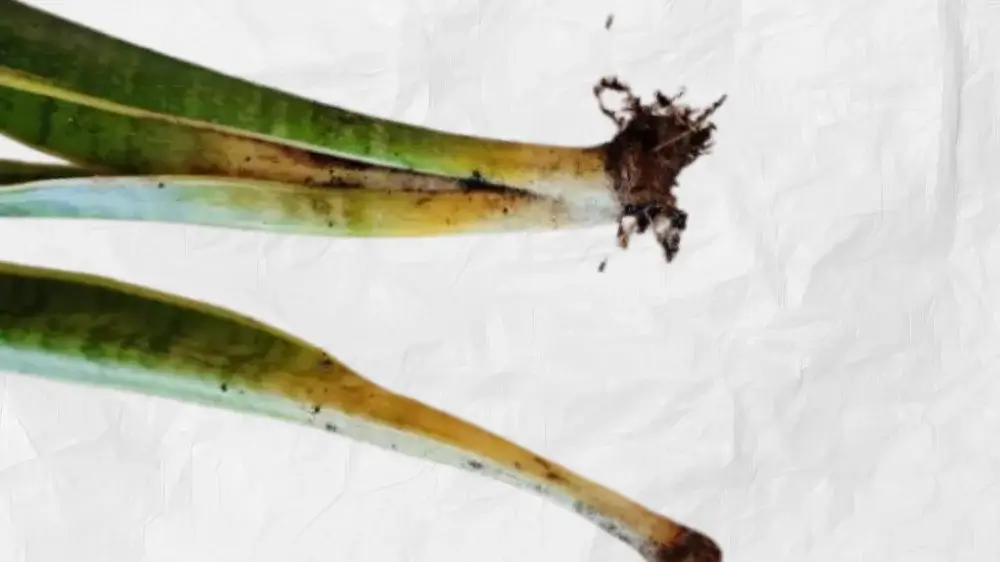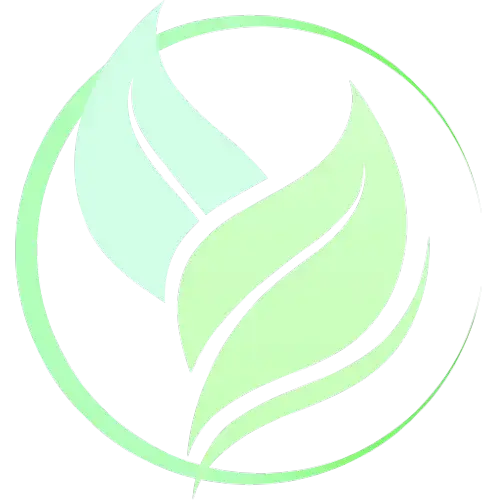Snake Plant Problems Solved: Real Fixes From 10 Years of Growing

Snake plants are supposed to be indestructible, right? So when yours starts showing signs of distress, it can be frustrating. I’ve been there too—watching those once-proud leaves slowly surrender to some unseen enemy.
The good news? Every symptom tells a story, and once you learn to read the signs, you can become your plant’s hero. Most snake plant problems stem from a few common issues that are easier to fix than you might think.
But before we dive into specific symptoms, let’s talk prevention. Understanding these three essentials will help you solve current snake plant issues and prevent future ones.
Snake Plant Health Essentials: Why They Matter
The foundation of a healthy snake plant (Sansevieria, also known as Dracaena trifasciata) lies in the perfect balance of soil, pot, and watering. Get these right, and you’ll avoid about 80% of the most common care mistakes before they even start. Think of it as building a strong foundation for your plant’s health.
Now, let’s decode what your plant is trying to tell you…
1. Yellow, Mushy Leaves (Overwatering)
When I first noticed my snake plant’s leaves turning soft and yellow, I thought it was a strange nutrient issue. It wasn’t. The real culprit was classic overwatering. Snake plants are desert-adapted — their roots need air pockets in the soil. Sitting in soggy soil suffocates them and invites rot that creeps upward into the leaves.
The University of Illinois Extension confirms that roots in waterlogged soil quickly weaken from lack of oxygen. If your leaves feel mushy, check below the surface: the soil should dry out a few inches down before the next drink.
How I’ve rescued mine:
- I stopped watering on a schedule and started using a moisture check (finger test, 2–3 inches down).
- If roots looked brown or mushy, I trimmed them back.
- A gritty, well-draining soil mix was my plant’s lifesaver.
- Now I wait until the soil feels bone-dry before watering again — no matter how impatient I feel.

2. Brown or Crispy Tips
Brown, crunchy tips are another problem I’ve run into, especially in winter. For me, the issue usually came from two things: tap water minerals and dry indoor air. Snake plants don’t handle fluoride or salt buildup well, and they also dislike desert-dry rooms.
The fix doesn’t have to be complicated:
- Switching to rainwater or filtered water made a huge difference in my plants.
- A few times a year, I flush the soil with several liters of fresh water to wash salts out (you’ll notice a white crust draining away).
- And when the air feels like sandpaper, I set the pot on a pebble tray or run a small humidifier nearby.
If you want to keep the leaves looking neat, you can trim off browned tips with clean scissors. It won’t hurt the plant at all.
3. Drooping or Bending Leaves
Snake plants are famous for standing like green swords. When mine suddenly flopped over, I thought the plant was giving up on me. The real cause was usually water — either too much or too little. Roots that sit in soggy soil lose their strength, while bone-dry roots simply can’t keep the leaves upright. Oversized pots and harsh sunlight can make things worse.
The Royal Horticultural Society notes that waterlogged soil is one of the most common killers of houseplants.
Here’s how I’ve helped mine recover:
- Check the soil before you panic: if it’s swampy, repot into fresh, well-draining soil. If it’s bone-dry, water thoroughly.
- Trim away rotten roots if you see them.
- Move the plant to bright, indirect light.
- Sometimes I stake floppy leaves just to give them a chance to bounce back.
4. No New Growth for Months
Snake plants grow slowly, but they shouldn’t stand completely still. When mine stalled out, the usual suspects were low light, cramped roots, or poor feeding. A dark corner keeps them alive, but not thriving.
Growth boosters that worked for me:
- Relocating to a brighter indirect-light spot brought back growth within weeks.
- A monthly diluted fertilizer in spring and summer gave the leaves a kick.
- Repotting when roots circled the pot freed them up to grow again.
5. Curling or Twisting Leaves
I once found my snake plant folding its leaves inward, almost like it was trying to hug itself. Turns out it was stress. Drought, drafts, or sudden temperature swings can all cause curling. Sometimes tiny pests like thrips also get involved.
Fixes I’ve used:
- A deep watering if the soil feels desert-dry.
- Keeping the plant away from heaters, AC vents, and cold windows.
- Holding indoor temps steady between 65–80°F.
- A close inspection for pests — and neem oil if needed.

6. Brown Spots or Patches
Not all brown marks are the same. I’ve had leaves with sunburn patches on the side facing the window, and others with spreading blotches from fungal disease when the air was too still. Occasionally, it’s just physical damage.
What helps:
- Removing leaves that are too far gone.
- Improving airflow around the plant.
- Watering at soil level only — dry leaves stay healthier.
- Using a fungicide if the problem clearly spreads like a disease.
7. Faded or Lost Variegation
When a variegated Laurentii of mine turned plain green, I learned that low light pushes the plant to make more chlorophyll for survival, erasing its stripes.
Ways I’ve restored color:
- Moving the plant closer to bright indirect light (or adding a grow light).
- Rotating the pot monthly so all sides get their share.
- Wiping dust from leaves so they can soak in light.
- Fertilizing gently during the growing season.
8. Mushy Base Stems
The first time I smelled root rot, I knew the plant was done for — sour, swampy, and unmistakable. A mushy base usually means rot has crept from the roots into the stems.
How I try to save them:
- Unpot the plant immediately and cut back to firm, healthy tissue.
- Let cuttings callous for a day or two before repotting in fresh, dry soil.
- Water lightly until signs of new growth show up.
- If the damage is too severe, I propagate unaffected leaves as backup.

9. White Cottony Clumps (Mealybugs)
Those fuzzy white blobs on my plant once fooled me into thinking it was mold. They were mealybugs — sap-sucking pests that spread fast if ignored. The University of Florida IFAS Extension suggests routine inspection and cleaning as the best defense.
My routine when they appear:
- Dab each pest with a cotton swab dipped in alcohol.
- Wipe leaves with a mild soapy solution.
- Spray neem oil weekly for a few weeks.
- Quarantine the plant until it’s clear.
10. Fine Webbing and Speckled Leaves (Spider Mites)
The first clue I ever had of spider mites was faint webbing between leaves. Left unchecked, they drained the color from my plant. These pests love dry, dusty rooms and multiply before you notice.
Mite control methods I’ve used:
- Rinsing the plant under a strong spray of water.
- Applying insecticidal soap or neem oil once a week.
- Raising humidity, since mites hate moist air.
- In bad cases, I’ve even released predatory mites to wipe them out.

Snake Plant FAQs
How do you fix a sick snake plant?
Diagnose first (overwatered, underwatered, or pests). Remove damaged parts, repot if necessary, and adjust care. Most recover quickly.
What does an unhealthy snake plant look like?
Symptoms include yellow, mushy, drooping, or spotted leaves, plus visible pests. Healthy leaves are upright, firm, and richly colored.
How do I know if my snake plant has root rot?
Check roots: healthy = firm and white; rotten = soft, dark, foul-smelling. Leaves may also collapse at the base.
Can you revive a dying snake plant?
Yes. Trim rot, repot in fresh soil, and propagate healthy leaves. They’re surprisingly resilient.
What does an overwatered snake plant look like?
Yellow, mushy leaves, soggy soil that won’t dry out.
Disclaimer: Snake plant care results can vary depending on your local climate, indoor conditions, and the specific variety you’re growing. The fixes shared here are based on personal experience and trusted horticultural sources, but always adjust for your own environment.
Final Thought from My Gardening Journey
Every problem your snake plant faces is an opportunity to learn its language. I’ve killed plants, saved plants, and discovered that even the so-called “unkillable” snake plant still needs us to pay attention.
The beautiful thing? These plants are incredibly resilient. Even when they look hopeless, they often surprise us with their will to live.
Which of these issues looks most like your snake plant right now? Share in the comments—I read every one.
